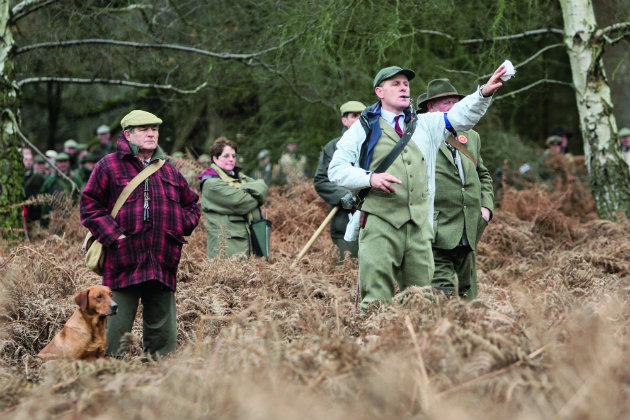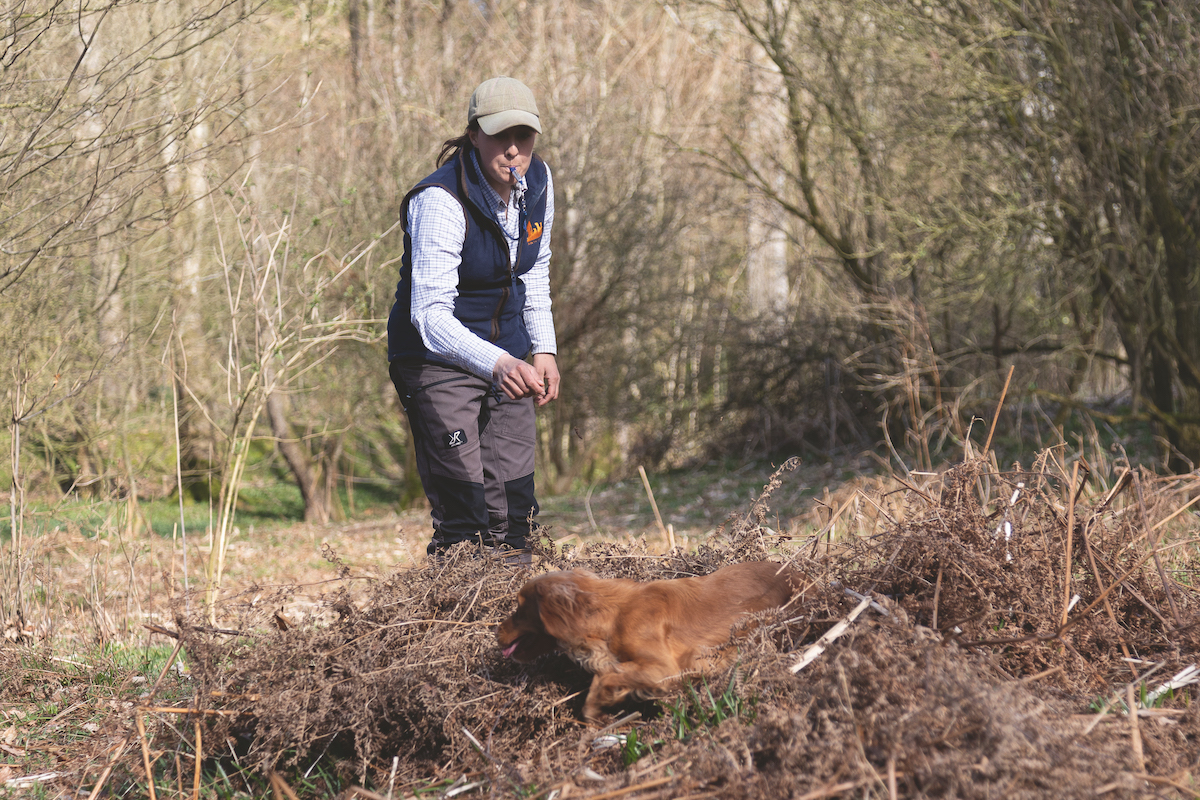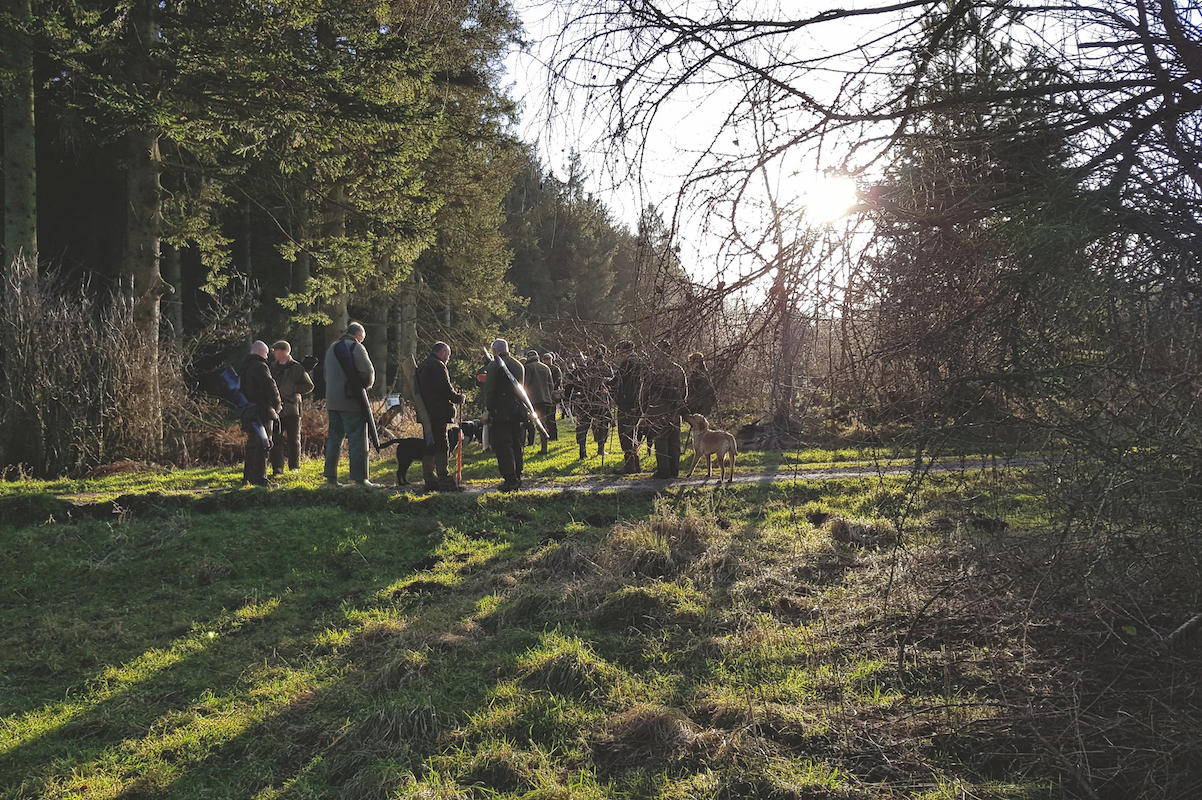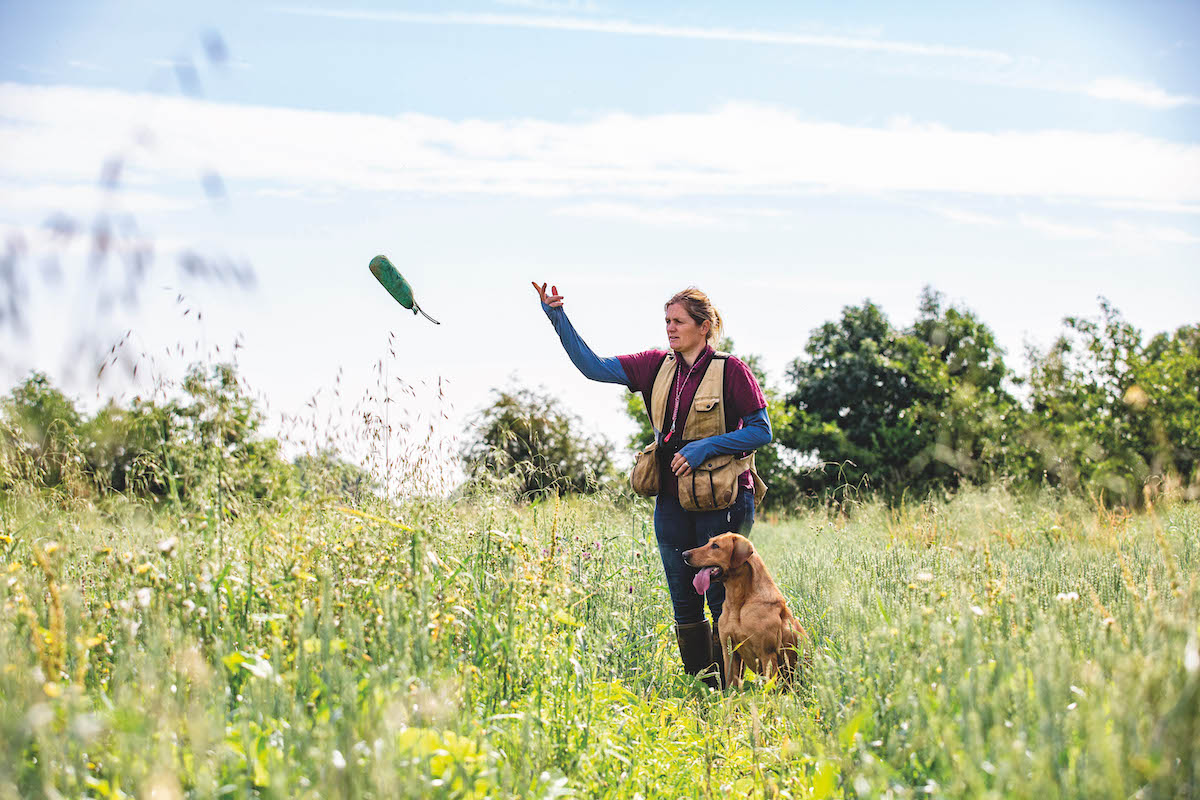The dog training hand signals you need to know
Being able to use hand signals to send a dog for a retrieve is vital for triallers and shooters says Graham Watkins

Your competition career will be shortlived if your dog can not be directed on to a blind retrieve
Depending on the kind of dog work you intend to do, you may know that it needs to be trained to take hand signals and to be able to be sent back, left or right. If you plan just to go beating with your dog, then you may never need to send the dog out in a particular direction, and there is a train of thought that if you are only going to go roughshooting the same may apply.
I shoot over my dogs on small walked-up/roughshooting days and I considered it an absolute necessity to be able to handle my dog on to the line of a runner or to a dead bird that dog has not seen down. If you plan to enter working tests, scurries or field trials, your competition career will be very shortlived if your dog cannot be directed on to a blind retrieve.
Before you can even consider starting directional training with your dog you have to make sure the foundations are all in place. The lessons of sit, stay (at a distance), being steady to thrown dummies, and a good delivery of the retrieve, all have to be firmly embedded into the dog’s training, if you try and bypass any of these basics you will only create problems that you will then have to try and rectify at a later date.
Dog training hand signals
The key to directional training is that the dog has to have complete trust in you and that when you send it in a particular direction there will be something for it to find. Therefore it is important that in the early stages the dog should always be successful. To begin with, the dog always sees the retrieves and through repetition of a signal and command it gains that trust. I always start by teaching a straight line back. There are various ways of doing this and I try to incorporate a few as this helps to build the confidence in the dog.
Guiding the dog in a straight line
I like to use a lane, as this helps to guide the dog in a straight line. Walk the dog out at heel and drop a dummy and make sure the dog sees it, turn around and walk back a few yards and send him back for the retrieve. Over a period of time you can extend the distance, but at this stage always send the dog from your side. You are building the dog’s confidence by always leaving the retrieve in the same spot and using the same location.
Once your dog is consistently going out in a straight line to the dummy you can move on to the next stage. This time walk the dog out, drop a dummy, and half way back sit the dog up and walk on a few yards. Face the dog and put your arm straight up in the “stop” position use the command “go back” and push your hand out towards the dog. By now the dog knows what is required and should spin around go out to collect the dummy. Go through the same procedure, slowly extending the distance between you and the dog, and from the dummy to the dog. Don’t rush this – it can take a week or so to embed the exercise in to the dog.
The next stage is to use multiple dummies in a line. I like to stand them so the dog can see them easily, as this helps with their confidence. Start with two and then gradually increase the number and distance. Once the dog has mastered this it is time to move on to blind retrieves. It is important to put the dummy in the same place as you have been putting the seen retrieves. Go through the same procedure and the dog should immediately run out to the same area and collect the dummy – remember this is all about building the dog’s confidence to the point where it has total trust in you.
Overcoming confusion
A word of caution: during this exercise you may have instilled such confidence in the dog that he knows that in a particular location and at a particular point he will find a dummy. That is what we are aiming for, but over the years I have found that using the “lane method” creates a situation where if you were to walk the dog away in a different direction it can become confused as it is used to being sent from only one point, and for that reason I also incorporate another method which helps to overcome this.
This method will give the dog a point of focus where he will find the retrieve. I use a plastic electric fencing stake, but a wooden stick will do. The advantage of this method is that you can move around the stake and send the dog from any point in the field, this can also help in training the dog to run out in a straight line from any direction. You start in the same way as you would using the lane, but you throw the dummy right by the stake and to start with just send the dog from the same spot until it has cottoned on to the fact that the stake is the pointer. Once it is confident with this you can start to move around in a circle and increase the distance you are sending it back. Obviously at some point you have to remove the stake and this can be done gradually by laying it down to start with and then eventually taking it away altogether. The key to this method is that you are able to move the stake anywhere in the field so the dog gradually builds up its confidence in different locations, which is obviously what we are ultimately aiming for when we start to work the dog in the shooting field.








